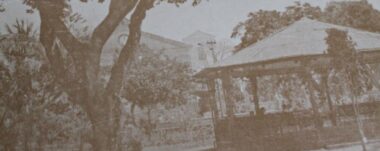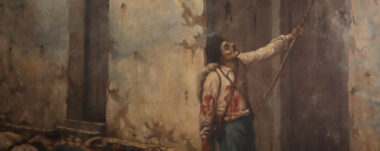Lebanese Community: One of the Largest in Costa Rica

lebanese-family-costa-rica-sensorial-sunsets
Amongst the migrant groups that developed in Costa Rica is the Lebanese community. This is the largest Arab community in the country, followed by the Syrian, Turkish, and Palestinian groups. Additionally, the Lebanese-Costa Rican population is currently the largest in Central America with about 50,000 people with this ancestry.
Historical Context of the Lebanese Community
The first great period of Syrian-Lebanese immigration occurred between 1887 and 1897, due to the serious economic problems of what was then the Ottoman Empire. This problem was exacerbated by the growing persecution of Christians at the hands of the Druze. Thus, most of the Lebanese migrants arriving in Costa Rica belonged to the Maronite or Orthodox Catholic Church. This facilitated their insertion into Costa Rican society becaused of their similarities with the Roman Catholic Church, the country’s official religion.
Costa Rica opened its doors to Lebanese migrants to work as traders in their search for skilled labor for the country’s insertion into the world economy. The integration of the Lebanese into high society also occurred through their involvement in the Masonic Grand Lodge of Costa Rica.
In 1904, the entry of ethnic Arab, Chinese, and Roma people from any country was prohibited in Costa Rica. However, this law did not completely stop the entry of these populations, which, along with the birth of new generations, strengthened their presence.
In the 30’s and 40’s, the following generations of the Lebanese population in Costa Rica promoted the rescue of their culture. The community founded La Sociedad Libanesa (The Lebanese Society) in 1928, currently called La Casa Libanesa (The Lebanese House), and developed through it the newspaper El Sheik. El Sheik was published from 1944 to 1946, compiling information and literature of the Arab community in Costa Rica and Latin America. It was also translated famous Arabic texts into Spanish, especially those of the poet Gibran Khalil Gibran.
During this period, the first congressmember of Lebanese descent was elected to the Assembly: Miguel Al Mekbel Carón. Al Mekbel was even reelected, serving throughout the period 1930-1938. Ricardo Neily Jop acquired an extensive property in the Corredores region between 1939 and 1940. This property would become Villa Neilly, later recognized as Ciudad Neily, named in honor of this Lebanese citizen.
While Lebanese migration declined sharply after World War II, it increased again in the late 1960s and with the outbreak of civil war in Lebanon in 1975.
In 1976, it was Miguel Barzuna, a descendant of a Lebanese family, who founded the Costa Rican Stock Exchange. At that time also, renowned hotels such as Hotel Cariari, Hotel Corobicí, and Hotel Plaza were owned by members of this community.
The Lebanese Community Today
These Arab immigrants, once settled in the country, dedicated themselves to commerce and store management. In this way, many of these immigrant families became wealthy and a part of the country’s business and political influence. One of the best known stores, still present today, is Yamuni. It was founded by the Yamuni Abdala family, who started their business in Costa Rica in 1915.
Communities of Polish, Chinese, and Lebanese origin have become an integral part of Costa Rican society, as well as prosperous and influential in the national economy, politics, and culture. For example, the Lebanese have The Lebanese House, a space to keep in touch with political and social events in Lebanon. This House offers Lebanese cooking, belly dancing, and Arabic language classes. In other words, it is a space to keep in touch with their cultural traditions.
Within the Costa Rican territory, there are three restaurants with authentic Lebanese food: Lubnan, Phoenicia, and FAQRA. The flavor of their spices, the abundant vegetables, and the use of all kinds of products make their food stand out from the typical Costa Rican gastronomy.
On the other hand, the participation of these immigrants in the different dynamics of Costa Rican society appears undercover. For example, the expression ¡machalá!, which is said in Costa Rica to prevent something bad or unwanted from happening, comes from the Arabic phrase Ma sha Allah which means “may God forbid” used in a context in which we want to keep away that which we do not want.
To conclude, understanding the participation of these immigrants in the different dynamics of Costa Rican society reveals their cultural contribution. The construction of the State and the diverse forms of sociability in the country did not occur alone. That is to say, immigrant communities participate in the construction of civic values and in citizen decision-making. The Lebanese community is not so visible on a daily basis, however, it should not be forgotten that they are part of the history of Costa Rica.
In summary
- In 1887, Lebanese migration to Costa Rica began, mainly due to economic problems and religious persecution.
- The integration of the Lebanese into high society occurred through their involvement in the Masonic Grand Lodge of Costa Rica and their commercial activities.
- In 1904, Costa Rica prohibited the entry of ethnic Arab, Chinese, and Roma people from any country, but did not completely stop the entry of these populations.
- The Lebanese community has become an integral part of Costa Rican society, as well as a thriving and influential part of the economy, politics and culture.
Bibliography
https://www.redalyc.org/journal/153/15352346008/html/
https://revistacienciassociales.ucr.ac.cr/images/revistas/RCS155/07-GONZALEZ.pdf
https://halshs.archives-ouvertes.fr/halshs-00529294/document
https://www.ucr.ac.cr/mezcladiticos.html
http://intushistoria.uai.cl/index.php/intushistoria/article/viewFile/124/110
Authors
Angie Loveday y Zelda Walters
Navigate articles




